“Who’s a good dog?”
It’s the ultimate existential question for our canine friends. (See also, “Are you a good boy?” and “Who’s my good girl?”)
“Who’s a good dog?” we ask, day after day, while scratching Duke’s shaggy head. “Who’s a good pupper?”
They stare back into our eyes, seeking only to please us, their godlike masters. But, in truth, the question stays with them. “Am I a good dog?” they ponder, late at night, before falling into a doggy dream. “Surely, I am. Otherwise, I wouldn’t have gotten that smokey treat. Yeah, I’m a good dog.” (Dogs are good at self-affirmation.)
So, yes, he’s a good dog. They’re all good dogs. And that’s because dogs just want to make us happy. That’s it. That’s what they live for.
The bond between humans and dogs began 20,000 years ago or so, probably when the first wild canine — perhaps a coyote or dingo — timidly approached a human campfire, got tossed a bone, and began hanging around for more.
Humans soon discovered that dogs were useful — as guards and protectors, as hunters, as faithful home companions — and as tiny furry accessories that fit into a purse. Well, the latter came much later, of course, after centuries of breeding that brought us the hundreds of varieties of dog we recognize today — not to mention the millions of cross-bred mutts of every size and hue that populate our lives.
Dogs see their “owners” as pack leaders and look to us for guidance, sustenance, and affection. In return, they offer unlimited loyalty and love. And as humans and dogs alike have learned through the centuries, that’s a very good deal. — Bruce VanWyngarden
 Justin Fox Burks
Justin Fox Burks
Tail Waggers
As any responsible dog owner will tell you, your dog needs a hat. And socks. The dog necklace, I will allow, may be excessive.
All can be had at PetSmart. They currently carry a sweet royal blue Stetson with a red-and-blue plaid band. For socks, there’s a selection, but I’d go for the camouflage and skull-and-crossbones combo. That the dog will hate both the hat and the socks is neither here nor there.
Your dog will look swell in a T-shirt that reads “Always Hungry.” Pair that with the “Player” bandana and you’ve got yourself a look. For more formal affairs, there’s the doggie tux and party dresses.
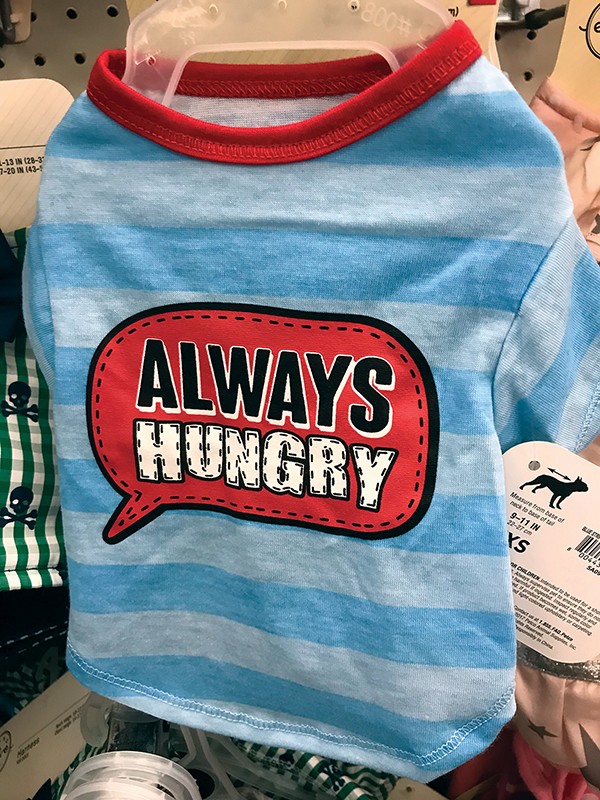 Susan Ellis
Susan Ellis
Hollywood Feed also peddles somes cool T-shirts. Will it be the “Pizza is my cardio” or “Everyday is Taco Tuesday”? Let’s make it both, shall we?
The real genius of Hollywood Feed, though, is all the people stuff. (I remember when that place sold food for your chicken; now they sell lamps.) I mean, how on earth will your pug know that you love him unless you’ve got the pug pillow for your couch? There are blankets made for snuggling and wine glasses etched with sayings like “All you need is love and a dog.”
Of course, you can’t leave your baby behind. Hollywood Feed knows this and carries the Kurgo line of various harnesses that hook into the seatbelt, booster seats so pooch gets a window view, and canine-carrying backpacks.
You can also find a lot of low-calorie treats to encourage puppy’s good behavior. Fromm’s food is cool because you can switch flavors without the specter of an upset tummy. You’ll really be stylish serving it in Hollywood Feed’s line of Fiesta Ware bowls.
 Susan Ellis
Susan Ellis
Dogs need stimulation, so make a beeline for Hollywood Feed’s extensive selection of Kong toys, perhaps the most recommended toy for dogs. They’re sturdy, come in a vast variety sizes, and many can be stuffed with treats or kibble. Some of the stuffed toy selection comes without squeakers. I endorse this, as I’ve got a little monster who loves the squeak, squeak, SQUEAK. (Hush! Mommy’s trying to watch The Americans!) The Chuck It line of toys is for outdoor play and includes toys for the water. The Sport features a flinger for throwing the ball really far. An added bonus is not having to touch a gross, slobbery ball. — Susan Ellis
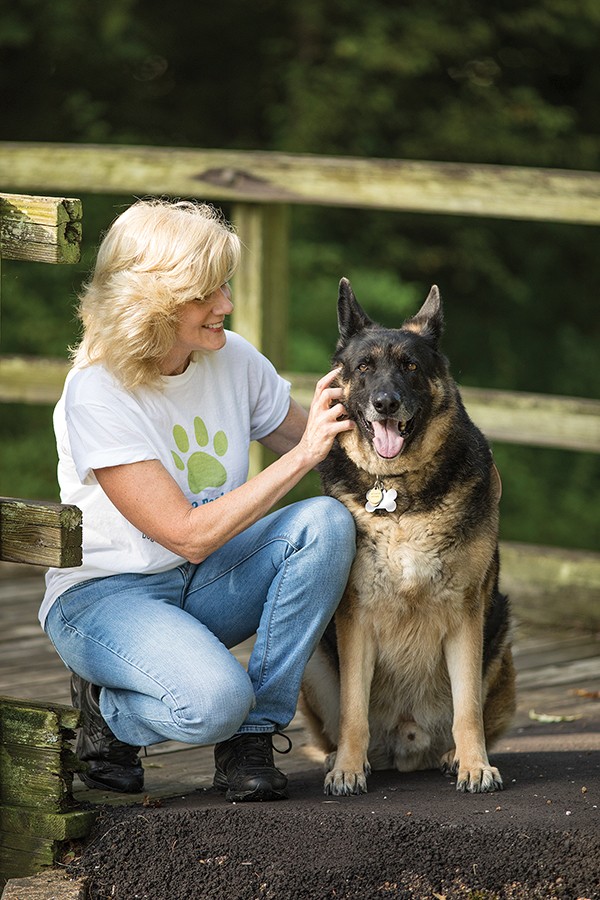 Justin Fox Burks
Justin Fox Burks
Tracey Cain
Tips From a Trainer
Tracey Cain, of Cain9 Positive Training, offers some solid tips for getting your dog to be better behaved and socialized.
What is positive reinenforcement training?
It’s based on building a bond of trust between you and your dog. Creating pain or anxiety damages that trust, so I don’t believe in that kind of training. I’m about starting at young age, if possible, and creating lots of positive experiences between you and your dog
What’s the best way to socialize your dog around people and other dogs?
There’s no one set way for training every dog. Each dog is different. You first build the trust. And I will say that having your dog on leash is really important. There’s nothing more scary than someone else’s dog running up to my dog and the owner’s saying, “He’s friendly.” He might be, but it could be stressing me and my dog.
Are some breeds naturally more aggressive?
Some would disagree with me, but I think that’s a myth. Aggression is not really breed-specific. Some breeds are more reserved, but it doesn’t mean that they are necessarily less social or more aggressive.
How do you stop bad habits — jumping up on people, for example?
You don’t reward that behavior. If a dog jumps up on me, I shun, turn, and say “Off!” It’s important that you not let others reward this behavior, like friends who say, “It’s okay. I love dogs.” If they pet the dog when he jumps up, they’ve rewarded that behavior. Just ask them to “shun.”
How about chewing up your stuff?
If your dog is chewing shoes, table legs, rugs, etc., the dog is bored. Get mentally stimulating toys to help spend that energy, but don’t put them all out at once. Rotate the toys to keep them interested. There are even toys that you can put a treat into and the dog has to work for the reward.
What about a dog that barks incessantly?
If they’re outside by themselves, they’re probably bored, as well. Give them a toy; go interact with them. As a rule, don’t leave your dog out in your yard all day. — BV
For more info on training, email Cain9tracey@gmail.com.
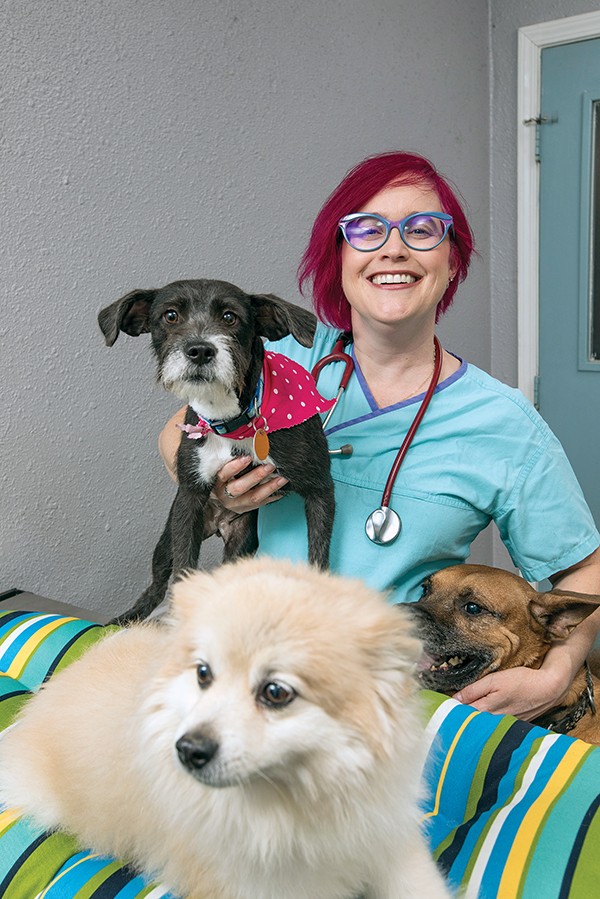 Justin Fox Burks
Justin Fox Burks
Jen Clay
Doggo Docs
Veterinarian Jen Clay founded Utopia Animal Hospital on Madison 10 years ago. She says the most common ailments she sees in her patients are vomiting and diarrhea. Usually, it’s nothing to worry about, just a furry friend eating something that didn’t agree with them. “You can’t really prevent that,” she says, “because you’ve got to let your dog go outside sometimes or they’ll go crazy.”
Usually, if the dog seems otherwise healthy, she’ll treat the symptom and call the next day to make sure the pet is feeling better. But if the dog seems otherwise unhealthy, she’ll order further tests. “There are about 20 things that can cause vomiting and diarrhea,” she says.
Lacey Rush, associate vet at McGehee Clinic For Animals, says Memphis’ mild, wet climate means that allergens are everywhere. “We see a lot of dogs with itchy skin, and secondary skin infections, and ear infections that are a lot of times connected with environmental allergies,” she says. “I can tell by the amount of pollen on my car in the morning how many of those dogs I’m going to see.”
If your dog is scratching frequently, Rush recommends making sure its flea prevention is up to date. “We do not have weather such that we have a flea season — it’s flea season year-round.”
These days, the most effective flea prevention is oral medication prescribed by a vet. Rush says if you want to use a flea collar, the only good ones are made by Seresto.
Rush says the most common injuries she sees are cruciate ruptures, which is like an ACL tear in humans. “With obesity on the rise, we see joint stress and tear as secondary to the metabolic disease. It’s pretty common. They come in holding up a back leg, and that’s one of the first things that comes to mind.”
Clay says she frequently hears owners concerned about obesity. “A lot of people ask if their dog is a healthy weight. If you pet them along their side, you should be able to feel their ribs easily without having to dig too much. But you don’t want them to be so skinny that their ribs are sticking out.”
Consult the label on your dog’s food to find out how much to put in their bowl every day. Don’t wing it. “A cup of food is a shockingly small amount,” Rush says. “I’ll never forget a case I had in North Carolina where this pet was gaining weight. The owner was like, ‘Doc I’m only feeding two cups a day!’ I said, ‘Bring me your cup.’ He brought in a Big Gulp from the gas station. The recommendations on the back of the package assume that’s all your pet is eating. It doesn’t account for treats. So if they’re getting a lot of treats, back off a little in the amount you’re offering.”
Controlling calories is only half the equation. “Getting sufficient exercise for energetic dogs is important. People will come in and tell me their dog is tearing up the house,” says Clay. “For a lot of behavior issues, if you can just increase their exercise, that will help a lot. And it’s good for us, too. Humans, I mean.”
Clay says if you’re thinking about getting a dog, “First, look at your lifestyle. Some people want a dog to be a running buddy, while some people want a dog who will hang out with them and watch Netflix. I know people who have paid $700 for a dog, then after the first weekend are like, oh my god, this dog requires a lot of attention. They didn’t realize what they were getting themselves into.”— Chris McCoy
Adopting a Dog
There are a few different places to adopt a canine companion in Memphis. One of them is Memphis Animal Services (MAS), the largest and only open-admission animal shelter in the city.
During the summer, MAS takes in more than 200 dogs a week, Katie Pemberton, community engagement specialist at the shelter, says. By adopting from MAS, you make room for another dog to come in and be fostered, she says.
Ten years ago, the city was euthanizing more than 80 percent of all pets that they took in. Now, that number is down to a little over 10 percent, Pemberton says. “Our goal is to never have to euthanize for space again, and we believe we can get there with the community’s support.”
One way to do that is to adopt adult dogs, she says. “Puppies fly out of here,” but adult dogs are often overlooked.
“Where we constantly struggle is large adult dogs, and that is the one category where we do still have to euthanize for space sometimes,” Pemberton says. “We know people want to help, and the biggest way they can do that is helping us get large adult dogs adopted or rescued.”
MAS is the only open-intake shelter in Memphis. This means MAS continues to accept stray dogs even after they’ve reached maximum capacity. Because sometimes this leads to euthanasia, Pemberton says adopting a dog might save its life.
“When you adopt from a shelter or rescue group, you’re saving two lives: the pet you adopted, and the next pet your adoption opened up a space for,” she says.
The adoption fee for dogs is usually $75, but until the end of August it’s been reduced to $30, which covers spaying/neutering, microchip, vaccinations, a heartworm test, and deworming treatment, as well as a collar, leash, and customized identification tag.
To adopt a dog, Pemberton says just visit the shelter on Appling City Cove any time during adoption hours, which vary by day. All you need to bring is your driver’s license and the adoption fee.
There isn’t a rigorous application process, Pemberton says. MAS practices an “Adopters Welcome” approach, recognizing that quality homes can be secured without “intensive scrutiny judgment.” Instead, the staff will ask a few questions to ensure the owner and the dog are a good match.
If you’re not quite ready to tie the knot with Lassie, MAS also lets you foster, visit, and volunteer with dogs. — Maya Smith
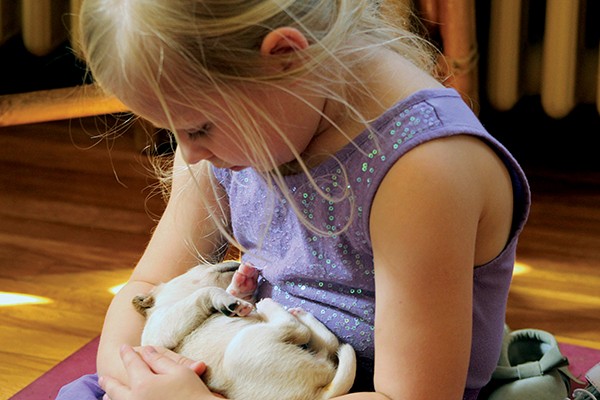 Kim Koehler
Kim Koehler
Foster family and foster puppy
Fostering a Dog
“It all started with a message on Nextdoor,” recalls Kim Koehler. “It said, ‘There’s a dog on the Greenline who’s crying in the rain and will not come to people.'”
“And she immediately thought, ‘That’s a job for me!'” interjects her husband, Jim Duckworth.
Once the dog was in their home, the young-at-heart newlyweds soon discovered that they had actually adopted eight dogs: The mutt they named Gracie was pregnant.
“I didn’t know what to do!” says Koehler. “Luckily the Streetdog Foundation got back to me and helped me out.” The local nonprofit offered advice and arranged meetings with potential “forever homes.” Koehler and Duckworth had stumbled into the world of canine foster families. And, they discovered how complex dog care can be.
Laura Helper-Ferris, who, as an “integrator” for Streetdog, helps to smooth the transition from foster families to permanent homes, notes that “foster families do more than just sheltering a dog while waiting for the forever homes. They often do a lot to get them through veterinary treatment. They socialize dogs, and even socialize them with other dogs sometimes. They’re evaluating them and seeing, are they good with kids? Who is this dog? The foster often knows that better than the rescue group, so they really are a key link in the whole thing.”
Helper-Ferris adds, “There’s two kinds of fostering. There’s one where you volunteer for the organization and they give you a dog to foster. In that case, the organization pays all the expenses and provides food and medical care and everything. And the other kind is when you find a dog, and you want to help but can’t keep it. An organization like Streetdog can help find a new home for them, but they need the finder to foster the dog in the meantime.”
Duckworth and Koehler ultimately started a fund-raising campaign to cover the costs of their new puppies’ veterinary care, relying on Streetdog to help vet potential adopters. That’s where Helper-Ferris comes in. “With Streetdog, there are fact-seekers calling the references and doing the home visits, so the families are already pre-chosen before I get there. What I’m looking for is, is there a yard? Is somebody gonna be around a lot? If the family already has dogs, I’m really looking at the dog behavior.”
Memphis journalist Fredric Koeppel, who has fostered at least 100 dogs in the past decade, notes that fostering is more than just a local issue. “Most of the dogs we fostered have gone to homes in New England. People in the South are not very good to dogs. They tend to abandon them or abuse them. In New England, they have very strict spay and neuter laws. So there’s actually a lack of dogs to go to homes up there.”
When choosing a rescue organization to work with, Koeppel notes that “you really want to make sure that any group you’re affiliated with is 501(c)(3), because then they have certain rules that they have to follow.”
Beyond that, it can be an emotional roller coaster. “When we first started bringing in dogs, and we’d take the dog, after three weeks or six months, to the transport to take the dog up to Massachusetts or wherever, we were just devastated. But you get more used to it, and you realize what a good service you’re doing, although there are a few dogs in our pack that we’ve kept, just because we absolutely fell in love with them.” — Alex Greene
Full House
How many pets is too many? You get one dog, then another. Then you’re thinking, Why not get them all? Before reason kicks in, you picture yourself the head of this herd, obviously leaving out the urine and poop, the fights and howling, the outrageous vet bills, and all that fur in your refrigerator. We asked Alexis Pugh, director of Memphis Animal Services, about the over-enthusiastic pet owner.
If you know someone has a lot of pets, will you refuse to adopt to them? Is there a general cut-off number? How do you judge how many is too many? Is it against the law to own too many pets?
We have a limit in our system that if someone has adopted four pets from us, a supervisor must be notified to review the record. We look at how long ago the adoptions were, see if those pets are still in the home, try and see if this person is really trying to function as a rescue (so we can have them become a part of our rescue program instead).
There is no limit on the number of pets you can have (as long as you are not functioning in a commercial capacity as a breeder; there are limits for that in the county unified code), but the law does require proper care and conditions, regardless of the number of animals you own.
What can happen to the animal if there are too many of them?
Too many animals can mean a lack of basic needs being met for the animals, because the owner is not able to sufficiently care for them and/or loses the ability to see the problems with clarity. If we receive a call and our officers discover a situation where the conditions do not meet the minimum requirements under the law, we either issue a warning, a summons to court, or we seize the pets, depending on the severity of the concerns.
My friend has five cats and one dog. Is that too many?
No. What matters is how the animals are kept. Someone could have 10 animals and do a better job providing for them than someone with one. It is more about what the pet has access to — food, water, shelter, medical care, and hopefully, love and enrichment. — SE
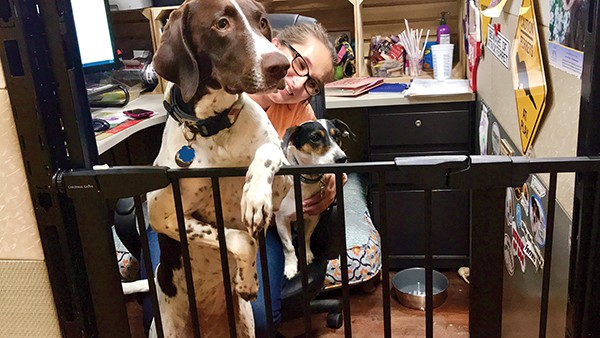 Toby Sells
Toby Sells
Bree Fuller with Lilley and Max at Hollywood Feed
The Dogs Are In.
Hollywood Feed’s corporate headquarters were quiet until Kate Lancaster knocked oh-so-softly on a closed door. An unseen chorus of barks big and small boomed. Lancaster was unfazed; it was plain that barking dogs were a regular and accepted part of the office’s aural landscape. If you think about it, dogs at Hollywood Feed make all the sense in the world.
“I guess he’s not in right now,” says Lancaster. “For some of the dogs that really like to, uh, announce themselves, people have to shut their doors, or, they’d bark at everything that walks by.”
In a baby-gated cubicle, Bree Fuller researches, buys, and promotes dog food for Hollywood Feed. On the floor behind her, Max, a Jack Russell mix, steps in his water bowl and bird-dog Lilley growls at Buffy, the tiny, poofy dog under Lancaster’s arm.
“I would hate leaving them at home,” Fuller says. “Also, it’s just nice that while you’re looking at your computer all day, you get to scratch your dog while you’re doing it.”
While it makes sense that Hollywood Feed is dog friendly, more and more offices are allowing and encouraging canine companionship.
Google’s code of conduct states the company’s, “affection for our canine friends is an integral facet of our corporate culture.” A 2015 survey for the Society for Human Resource Management found that 8 percent of respondents reported that their workplaces permitted pets, an increase from 5 percent in 2013. Last year, the U.S. Department of Interior celebrated its first “Take Your Dog to Work Day.”
While hard numbers on dogs in Memphis offices don’t really exist, it’s easy to tell paws are padding into more workplaces here. Memphis ad agency Archer Malmo has long had a reputation for dog friendliness.
“I love to bring him because, as a dog mom, it’s nice to know he’s here with me and not sitting in a crate at home,” says Sarah Jones, an account coordinator. “Other people bring their dogs and they’ll all play. It’s a good way to make friends in the office, too.”
Jones says her dog, Brer, was a bad puppy with a penchant for chewing up remote controls. But bringing him into the office has helped him, and now he’s a “perfect office dog” that attends meetings.
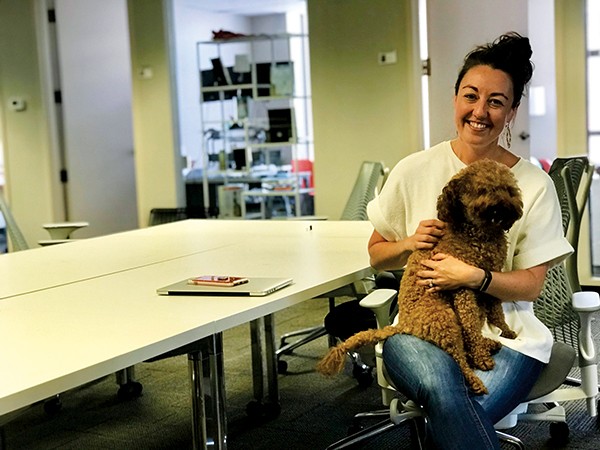 Toby Sells
Toby Sells
Katie Frasier with Elvis at Archer Malmo
One of Brer’s office buddies, mini goldendoodle Elvis, “kind of grew up in the office, says his owner Katie Frasier, the firm’s director of integrated communications strategy.
“We joke that he has all of his aunties and uncles here,” Frasier says. “In the afternoons, people will just come and sit on the couches in [a common work area], and Elvis will just hop up there and snuggle with them. It’s a nice way to end the day.” — Toby Sells























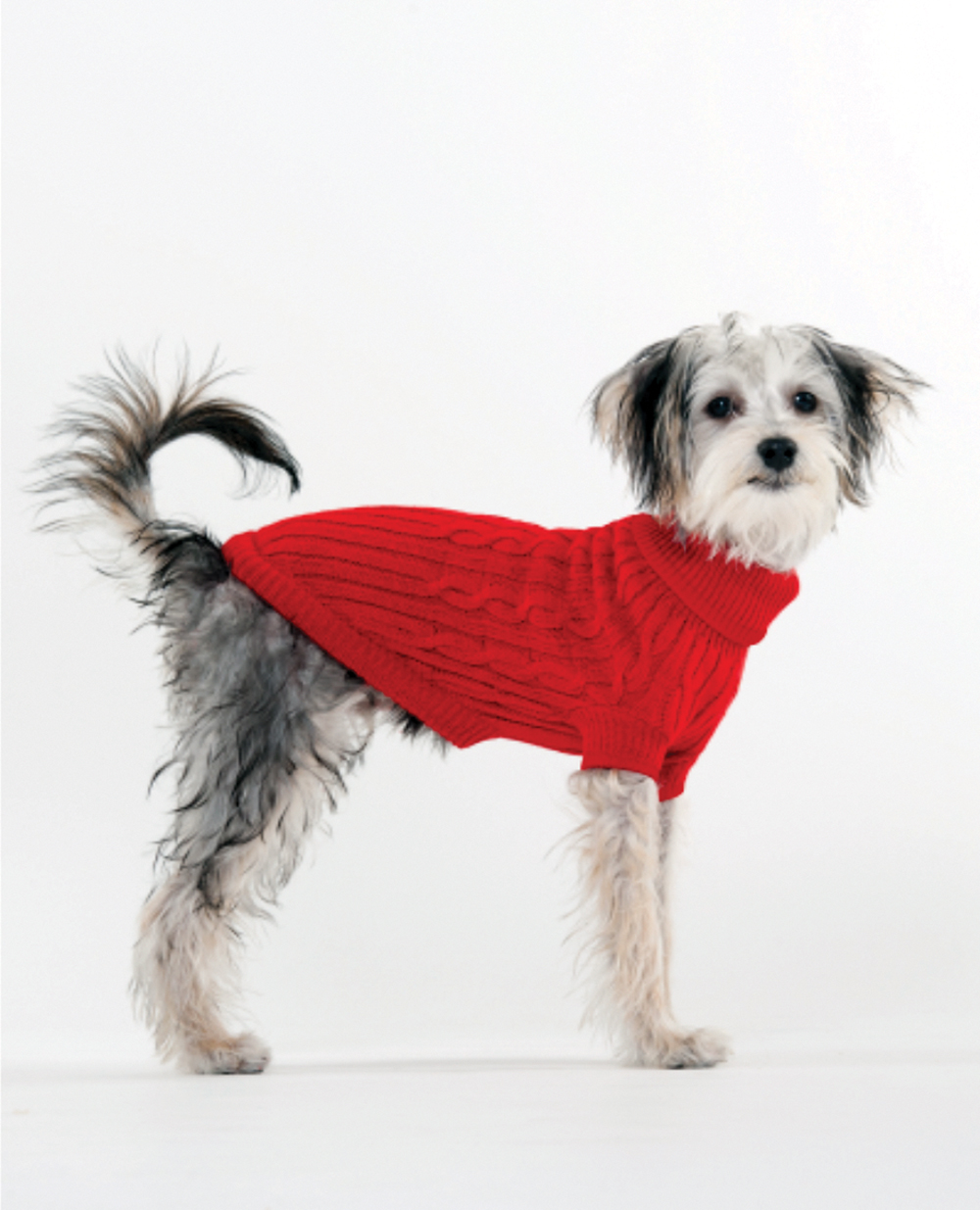













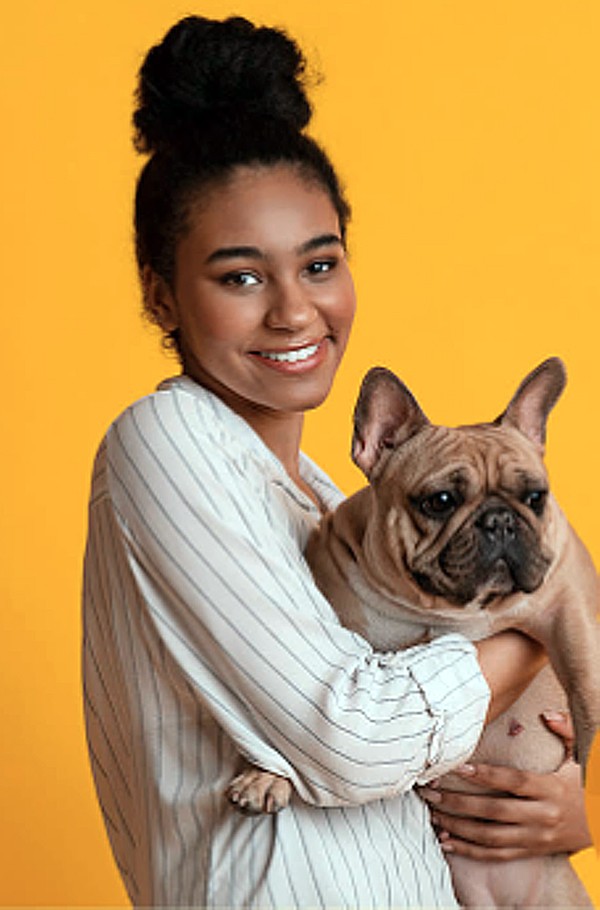
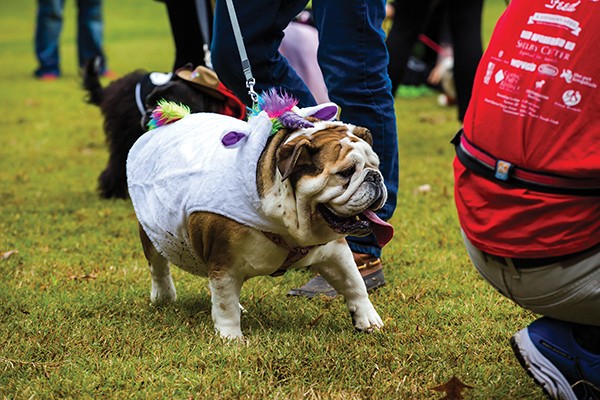 Melissa Mcmasters
Melissa Mcmasters  Toby Sells
Toby Sells  Toby Sells
Toby Sells  Toby Sells
Toby Sells  Jon W. Sparks
Jon W. Sparks 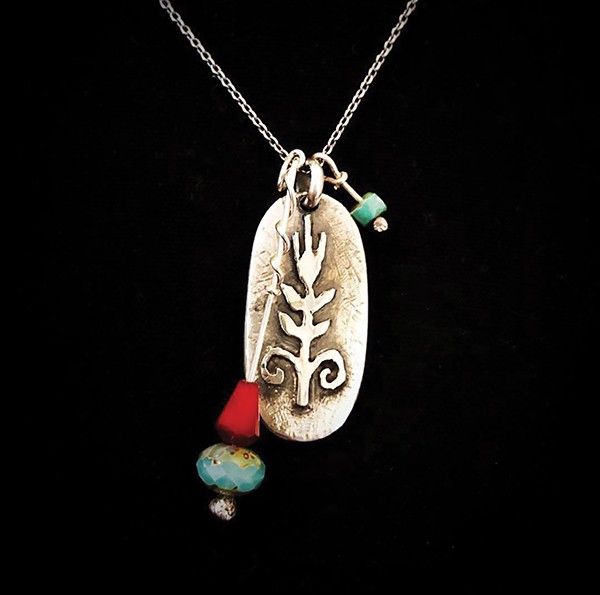
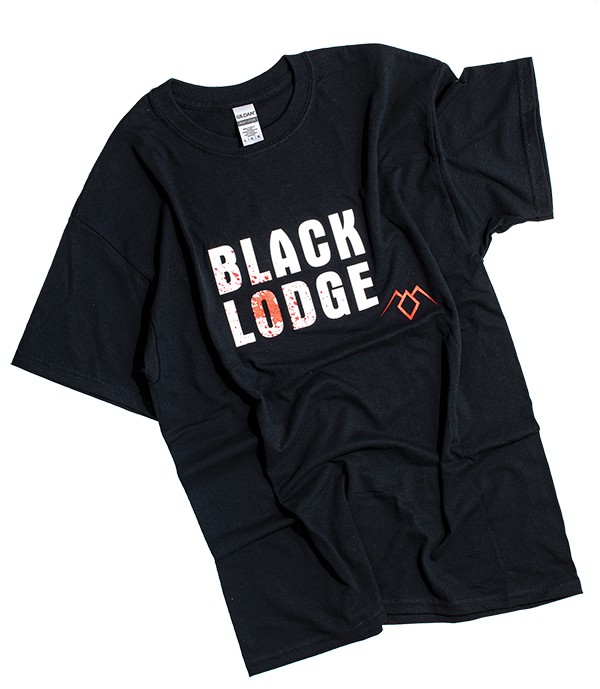 Justin Fox Burks
Justin Fox Burks 
 Justin Fox Burks
Justin Fox Burks 
 Justin Fox Burks
Justin Fox Burks  Justin Fox Burks
Justin Fox Burks 

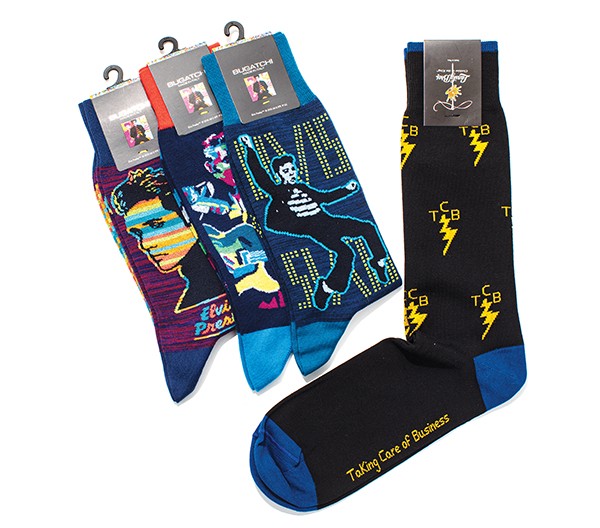 Justin Fox Burks
Justin Fox Burks  Justin Fox Burks
Justin Fox Burks  Susan Ellis
Susan Ellis  Susan Ellis
Susan Ellis  Justin Fox Burks
Justin Fox Burks  Justin Fox Burks
Justin Fox Burks  Kim Koehler
Kim Koehler  Toby Sells
Toby Sells  Toby Sells
Toby Sells